
The spread of Japanese Knotweed on your land or property can be very damaging. With the plants rapid spreading habits, the time taken to remove it can increase dramatically and be very expensive.
The United Kingdom has a number of other plants that can be confused with Japanese Knotweed. This article by CYB Environmental will list some of the most similar plants to aid you in identifying a real knotweed infection. We are a RICS regulated company that specialise in the removal of Japanese Knotweed. For enquiries and assessments, be sure to contact us, we can help you decide whether or not you have a knotweed infection. That being said, let’s get into plants that look like Japanese Knotweed.

Himalayan Knotweed (Persicaria Wallichii)
When not in bloom, Himalayan Knotweed can look extremely similar to it’s Japanese counterpart due to the similar stems. Not only to the eye, but also to the touch as the stem on both plants is hollow.
Take a close look at the leaves, are they very narrow and half as wide as they are long? With the stem growing to around 1cm in diameter? If so, the plant you’re inspecting is likely to be Himalayan Knotweed. The flowers have a pink hue, rather than the pure white plants on Japanese Knotweed.
Himalayan Balsam (Impatiens Glandulifera)
Similar to Japanese Knotweed, Himalayan Balsam is a rapidly growing plant. It can quickly cover a large area and grow as tall as 2.5 Metres. It also has a hollow stem.
Begin by inspecting the stem, you will see the leaves grow opposite each other, rather than the alternating pattern of Japanese Knotweed. The leaves are also much longer and thinner too, with a pink midrib.
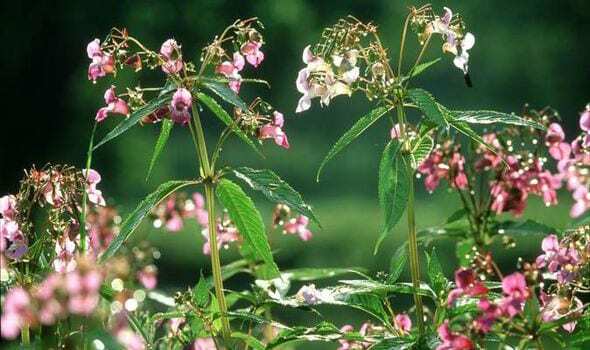
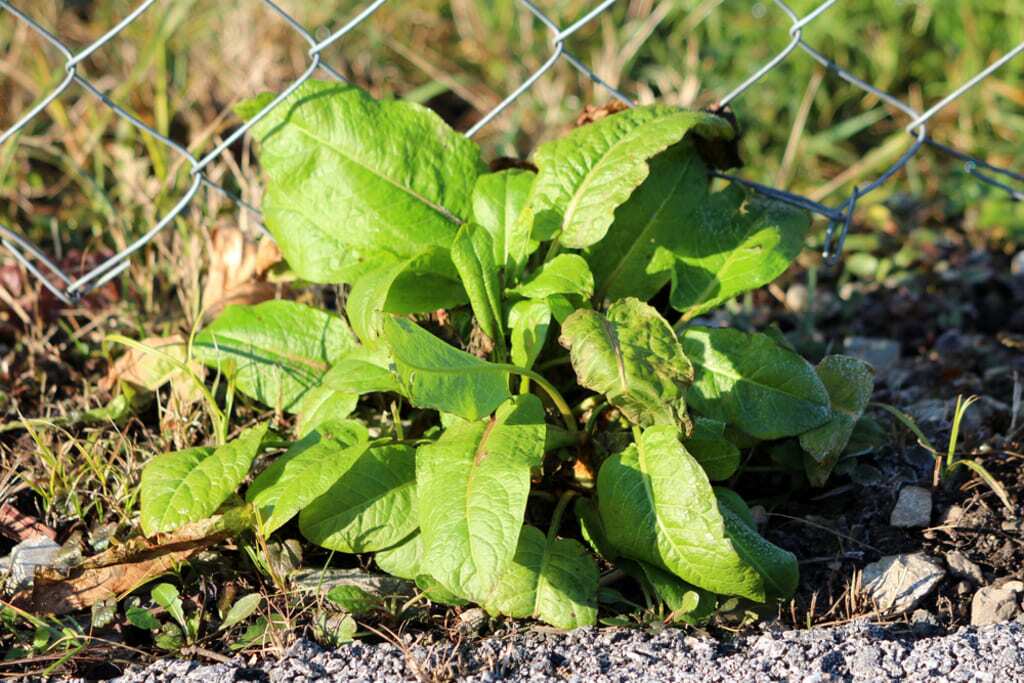
Broad-leaved Dock (Rumex Obtusifolius)
Part of the same family, so hardly surprising that it looks similar to knotweed, Broadleaved Dock has leaves arranged alternately along the stem as well. Its flowers and stems also form spikes just like knotweed.
Stems are fluted and shorter than knotweed plants, growing up to 1m in height. The stems are not completely hollow and contain a foam-like substance when snapped open.
Chameleon Plant (Houttuynia Cordata)
The leaves of a Chameleon plant are why it often gets confused with Japanese knotweed. Both plants have heart-shaped leaves and produce flowers, with both reaching heights of a metre or above.
The big difference between them is the flowers. Japanese knotweed produces clusters of small creamy-white flowers, whilst chameleon plants have slightly larger flowers with easily distinguishable petals.


Lesser Knotweed (Persicaria campanulata)
It’s not only the same that is similar. Lesser knotweed has an almost identical bamboo style hollow stem, with small flower clusters and rising to around the same height.
However, lesser knotweed can be identified by its pink flowers rather than creamy-white, with thin ovate leaves rather than heart-shaped ones. The leaves are the biggest indicator, so check this feature of the plant before you jump to any conclusions.
Ornamental Bistorts (Persicaria amplexicaulis)
Also known as Red Bistorts, this plant has similar leaves and stems to Japanese knotweed, with its stems hollow and separated into nodes. Ornamental Bistorts can be mistaken for Japanese knotweed when not in bloom.
Once flowers start to grow, this is where the plant differs. Ornamental Bistorts are also planted on purpose and don’t grow at alarming rates. You are unlikely to suddenly find Ornamental Bistorts on your property if you haven’t planted it yourself.
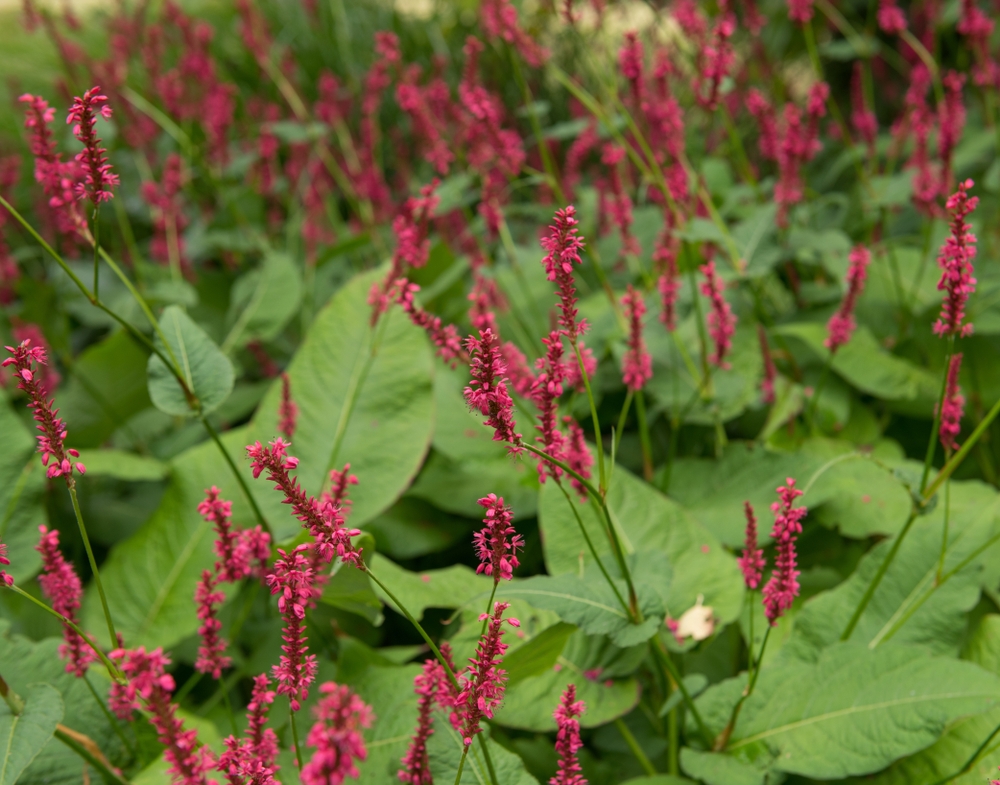
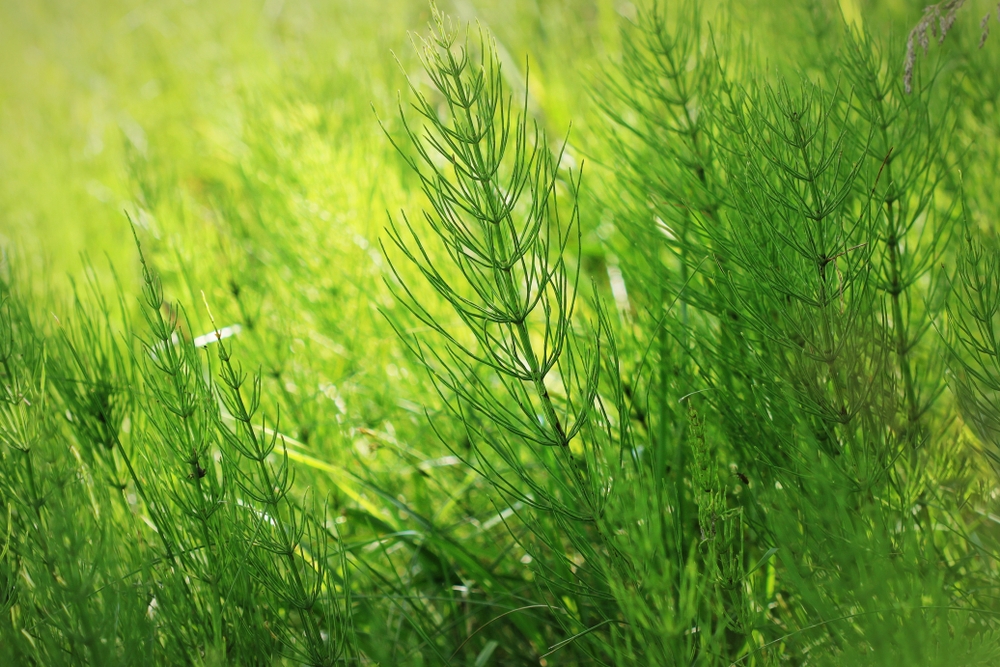
Horsetail (Equisetum)
When it’s young, horsetail can be confused with Japanese knotweed. Its growth speed and quantity match that of Japanese knotweed, and its sudden appearance might cause some concern.
However, Horsetail soon loses its knotweed similarities as it matures, developing green stems and its signature brush-like appearance.
Russian Vine (Fallopia baldschuanica)
Russian Vine can be mistakenly identified as Japanese knotweed due to its small cluster of flowers, and its mass of green leaves. Some leaves on Russian Vine’s could also be mistaken as heart-shaped, which might cause confusion for homeowners.
Given its name, the Russian Vine plant is a climber that relies on structures to support itself, unlike Japanese knotweed.
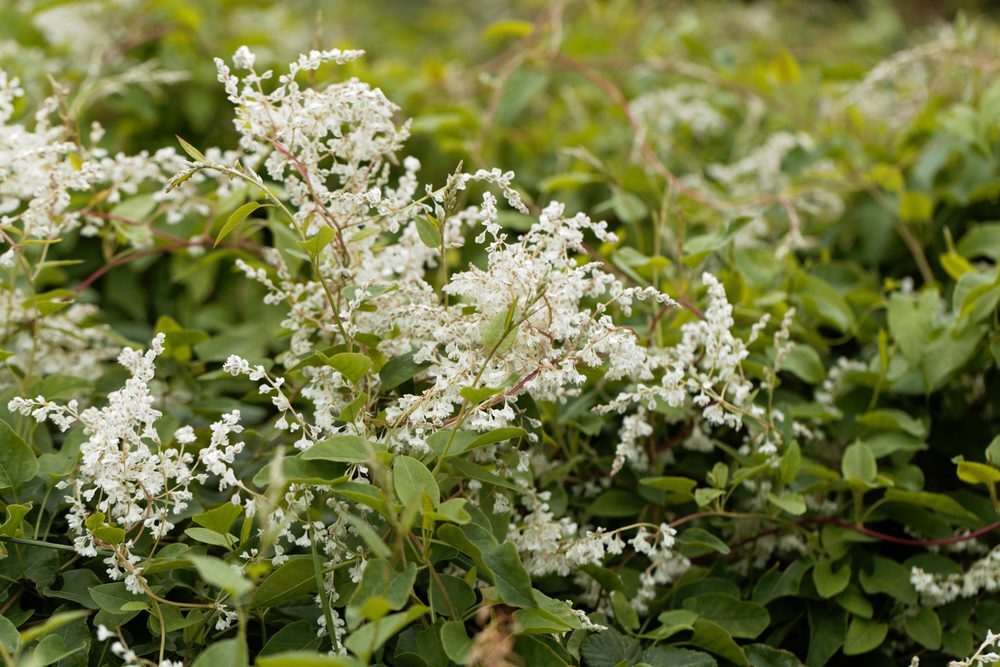
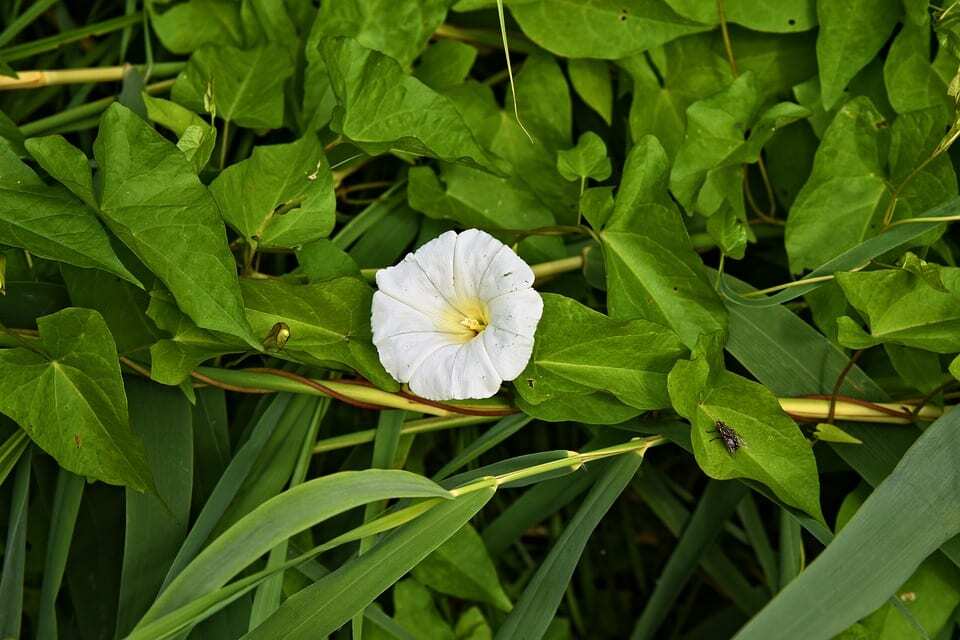
Bindweed (Convolvulus Arvensis)
With Bindweeds heart shaped leaves, it would take a closer inspection to gage whether or not it is Japanese Knotweed. The leaves of Bindweed are also similar to Knotweed due to the alternate growth patterns along the stem. Bindweed can also cover a large area very quickly if left untamed. One of that most mistaken plant that looks like Japanese Knotweed.
As the name suggests, Bindweed is a climbing plant that has the ability to grow by twisting around other erect plants. That being said, it is unable to support its own weight and lacks the ability to grow straight up, unlike Japanese Knotweed. Large pink or white flowers also appear in early summer for Bindweed, also distinguishing it from Knotweed.
Concerned about Japanese knotweed on your property? Contact CYB Environmental for our excellent removal services, or for more information on Japanese knotweed.

